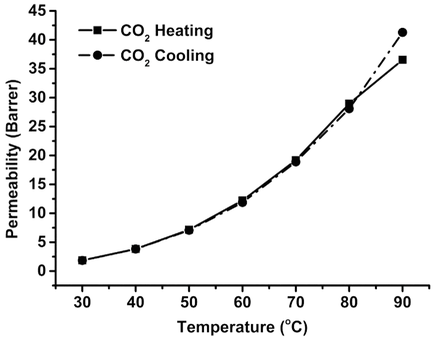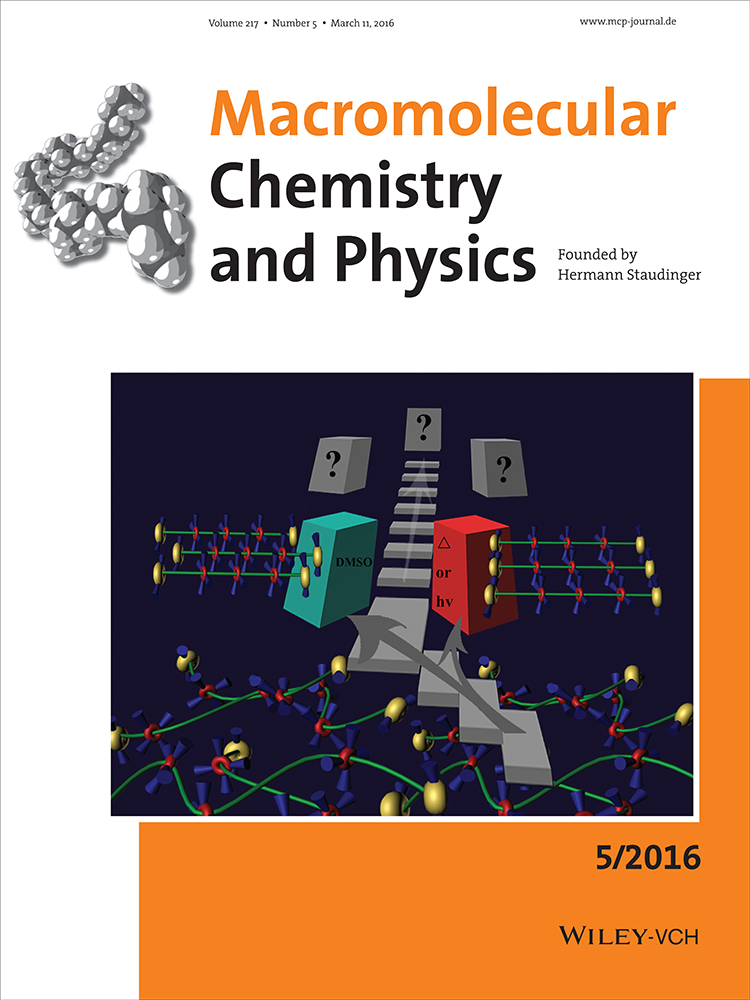The Synthesis of Poly(ethylene glycol) (PEG) Containing Polymers via Step-Growth Click Coupling Reaction for CO2 Separation
Abstract
The synthesis of step-growth polymers via a step-growth click coupling reaction of diazides based on poly(ethylene glycol) (PEG) and dialkynes based on aromatics is reported. The polymers are characterized by proton nuclear magnetic resonance spectroscopy (1H-NMR), carbon-13 nuclear magnetic resonance spectroscopy (13C-NMR), Fourier transform infrared spectroscopy (FT-IR), gel permeation chromatography (GPC), differential scanning calorimetry (DSC), and thermogravimetric analysis (TGA). Gas transport properties of one polymer are measured by the time lag (constant volume, variable pressure) method. Low gas permeabilities are a consequence of the rather high glass transition temperature. The rather high selectivities in separation of CO2/N2 and CO2/CH4 result from the CO2-philic groups such as PEG, triazole, and benzoxazine. According to the gas permeation measurements, the membrane is stable in the temperature range from 30 to 90 °C.





